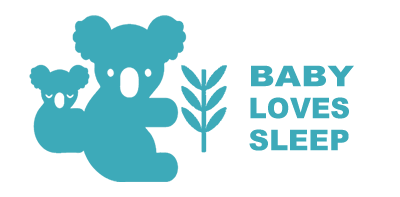Your Cart is Empty

The Truth About Baby Sleeping Positions
We've heard some parents and grandparents say that putting your baby to sleep on their tummy helps them sleep better, or that their baby is just a natural tummy sleeper.
So we've set out on a research to debunk some of the myths that babies sleep better on their tummies.
MYTH 1: TUMMY AILS ARE LESS LIKELY TO HAPPEN WHEN SLEEPING ON THEIR TUMMY
There are many experts that explain the best way to burp babies is when they are face down, and massaging your hand upwards on their backs to encourage any air bubbles that have been swallowed during feeding. Helping your baby to burp ensures any trapped wind passes out up the oesophagus and through their mouth. These air bubbles that don't get passed out can cause wind pains for your baby resulting in a fussy and unsettled baby.
Truth: Burping and passing of wind helps to alleviate tummy discomforts in babies. However, it's best to do this straight after a feed well before putting them to sleep. When they are ready for sleep, it is safer for them to sleep on their back.
MYTH 2: CHOKING IS LESS LIKELY TO HAPPEN WHEN SLEEPING ON THEIR TUMMY
Many believe that there is greater likelihood of their baby choking on any fluid or spit up when sleeping on their back - this is simply not true.
Truth: Babies are born with a reflex to keep their airway clear to avoid choking. This reflex will enable them to automatically cough up or swallow any fluid or spit up. Evidence has shown that babies are more likely to choke or aspirate when sleeping on their stomach.
According to the AAP, healthy babies placed on their back to sleep are less likely to choke on vomit than tummy sleeping infants. Your baby's airway anatomy and their gag reflex will keep that from happening.
Watch the video below created byCribs for Kids to find out why!
MYTH 3: MY BABY HAS STARTED TO ROLL AND PREFERS TO SLEEP ON THEIR TUMMY
Babies develop the ability to roll at different ages through their developmental stages. They learn to roll from back to front before they are able to roll from front onto their back. Therefore, an infant who rolls onto their stomach may not be able to roll back.
If your baby is sleeping face down (prone), they are more likely to occlude their mouth and nose if their sleeping surface is soft and compressible. Worse yet, many baby swaddling products restrict arm movement and they would be unable to push away from the surface. If they are unable to use their arms to push away from the surface of inhaled and exhaled air and would result in the re-breathing of carbon dioxide (C02).
Truth: Re-breathing of carbon dioxide has been linked to SIDS and infant suffocation.

[YouTube link to Professor David Greenblatt's video titled:SIDS and the dangers of infant suffocation]
SAFE SLEEPING FOR YOUR BABY
The following tips are recommendations from the AAP:
- Always place your baby to sleep on their back as this greatly reduces the risk of sudden and unexpected death in infancy (SUDI), which includes SIDS.
- Avoid placing loose items in their cot or sleep space such as toys, pillows, loose blankets, sleep positioners or decorations to avoid face occlusion. The ideal place for a baby to sleep is in a safe crib, on a safe mattress, with safe bedding in a safe sleeping place, both night and day.
- Only use a firm mattress covered only by a fitted sheet and/or mattress protector. There should be no other padding added to the mattress in an attempt to make it softer and more “comfortable”. If a baby lays on soft bedding or soft surfaces (such as an adult bed or couch) that surface may indent or conform to the shape of the baby’s head and increase the likelihood that the infant will breathe in their own exhaled breath (carbon dioxide). These surfaces also increase the risk of suffocation if the baby becomes face down in the mattress, couch, or other soft surfaces.
- Remember that babies should no longer be swaddled once they show signs of being able to roll. Our Sleepy Hugs baby sleep bags help babies transition from swaddling to free arms, designed to give the security babies need for longer sleep while allowing a greater range of arm movement so they can safely roll while they sleep.
Sleepy Hugs is designed for tummy rolling
Find out more
Swaddling your newborn helps them to feel safe, secure and keeps them sleeping longer. A huge WIN for parents!
But as they get older and start to roll, they should no longer be swaddled. Swaddling restricts arm movement, so if they were to roll onto their front they may not be able to roll back again and this can be dangerous.
The Sleepy Hugs allows for a gentle transition from swaddling to free arms without going cold turkey.
SLEEP SAFE - SHOP NOW!
Want to know more, check out the links below:
How infants’ respiration and circulation work
What is the difference between Suffocation and Asphyxia?
Visit the Red Nose Organisation for the latest evidence-based advice on how to keep your baby safe and reduce the risk of sudden infant death.



















